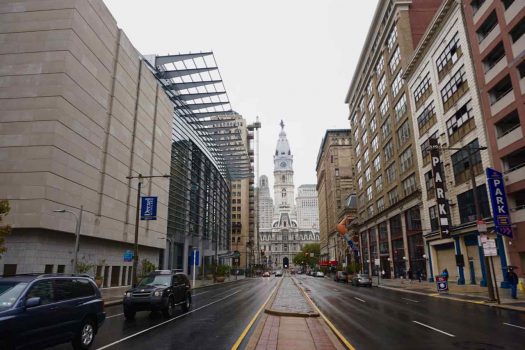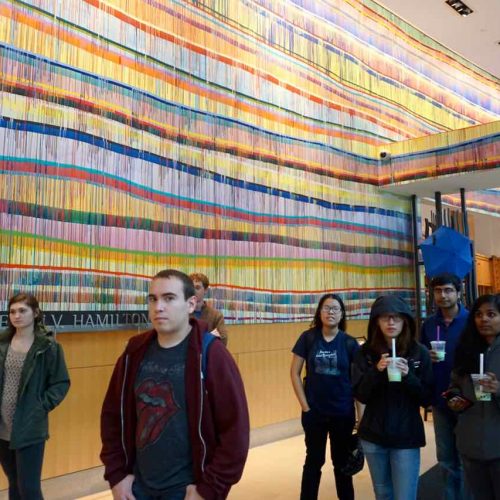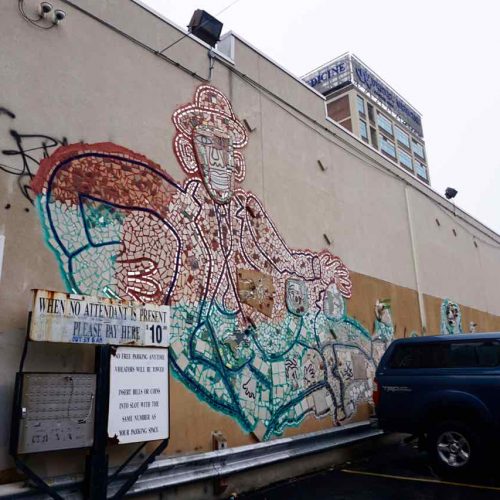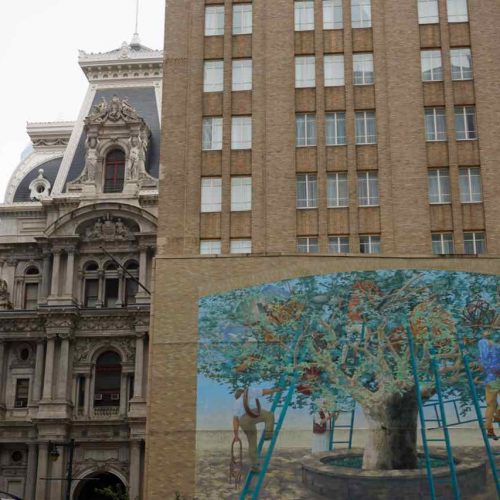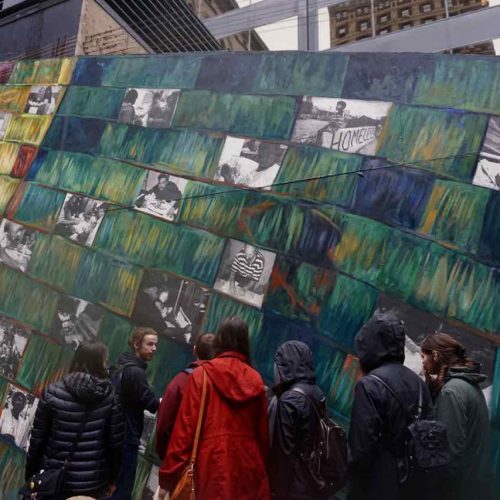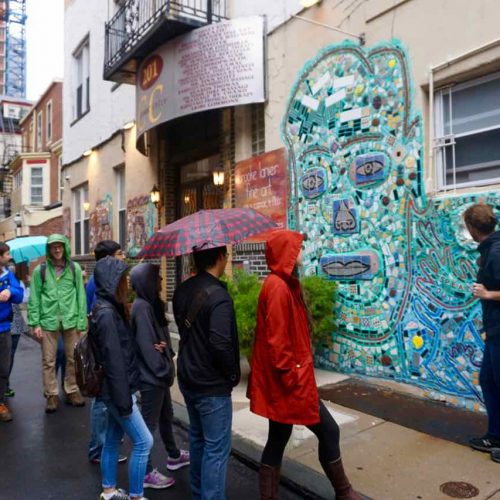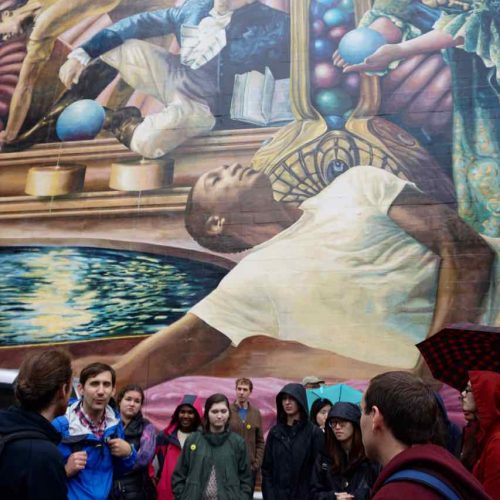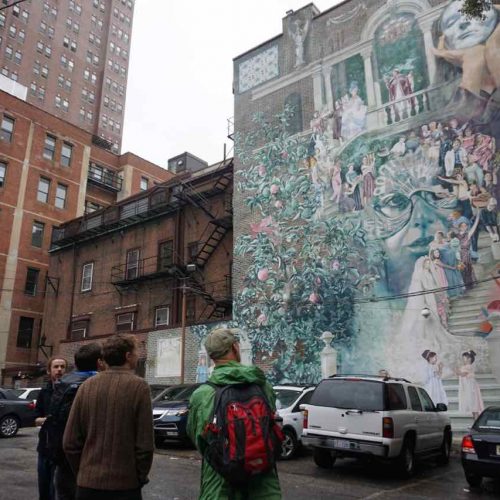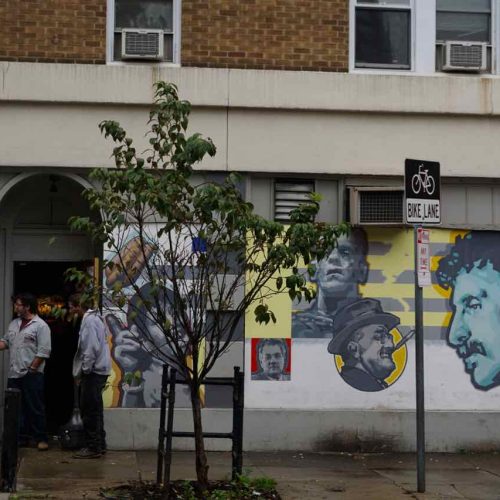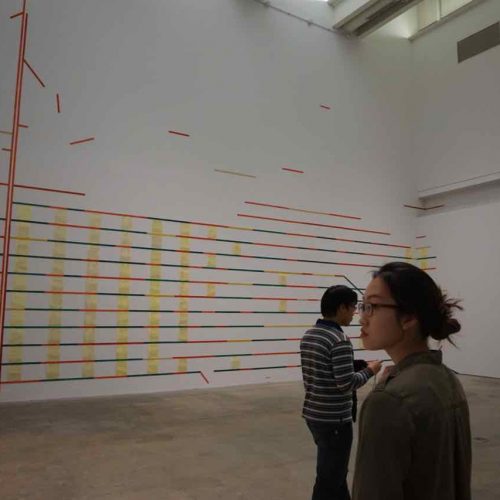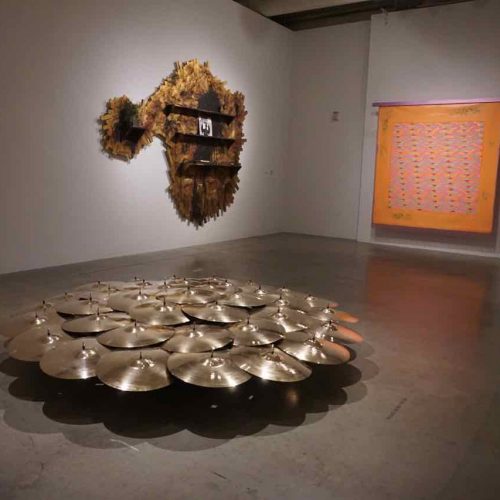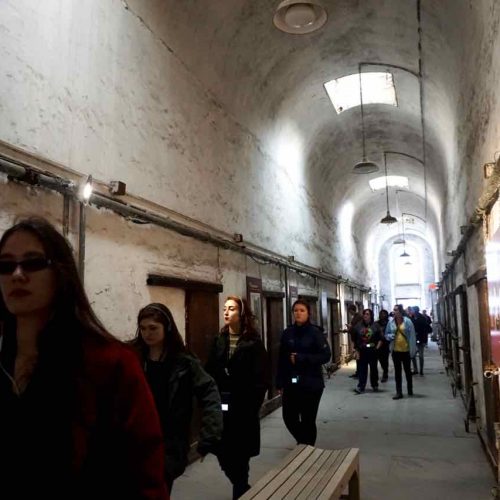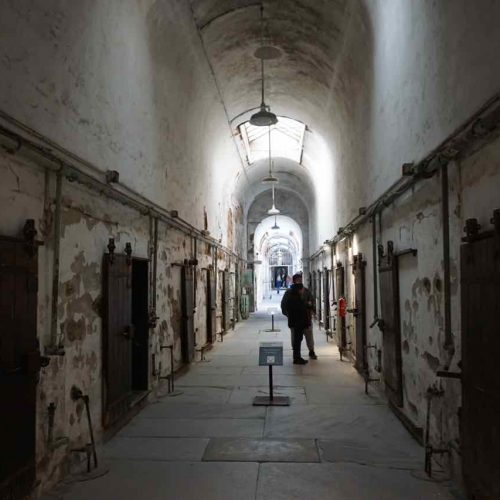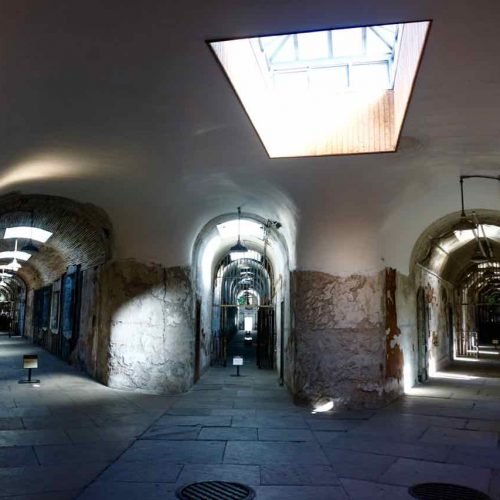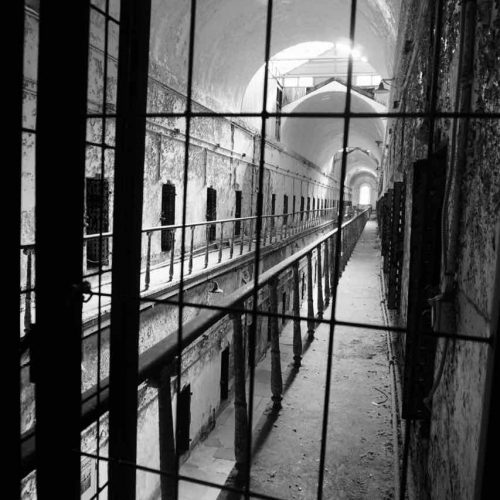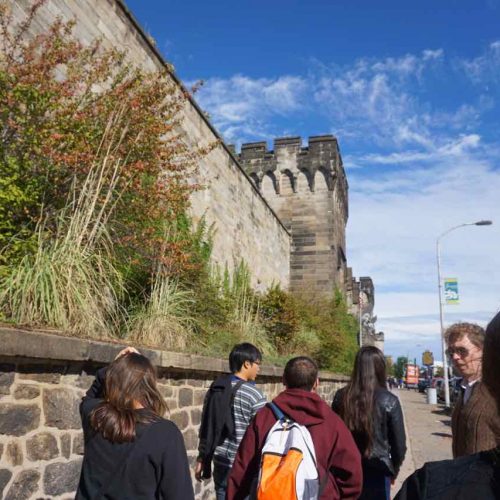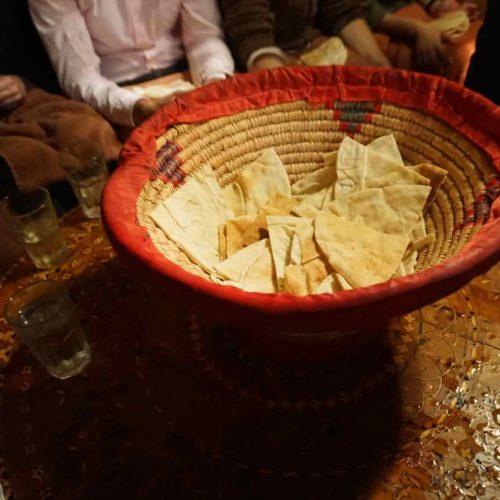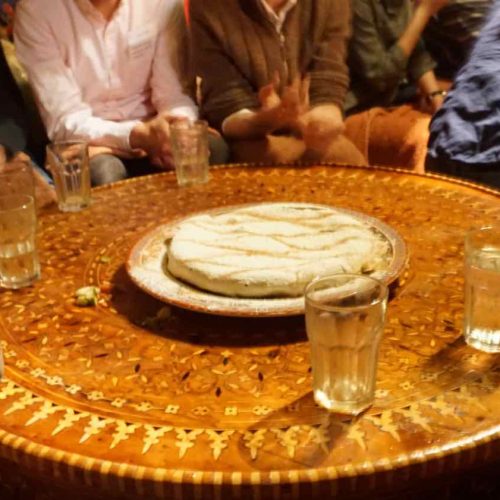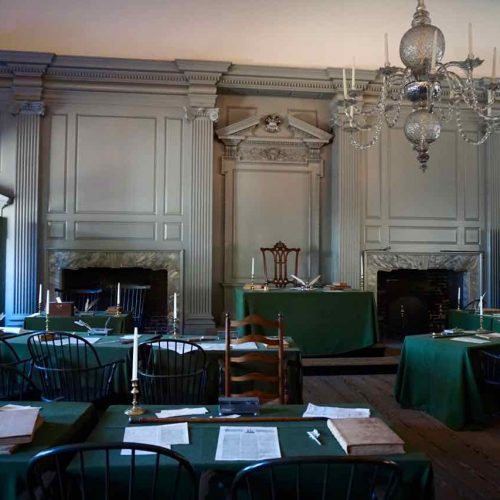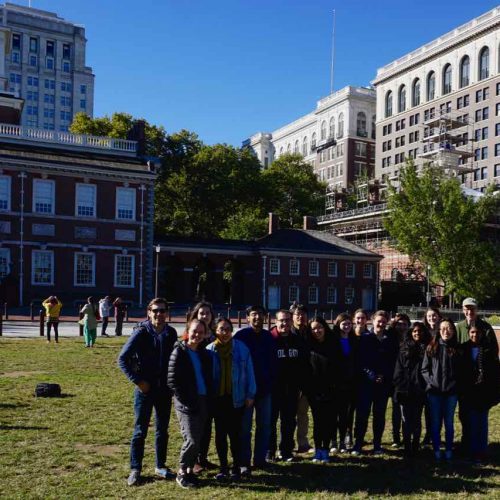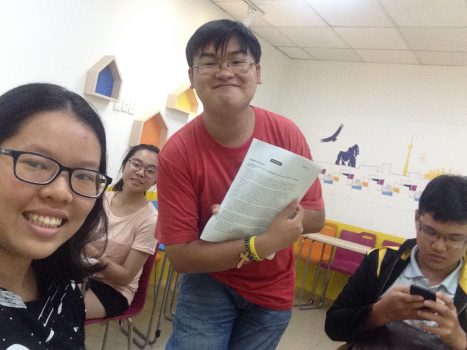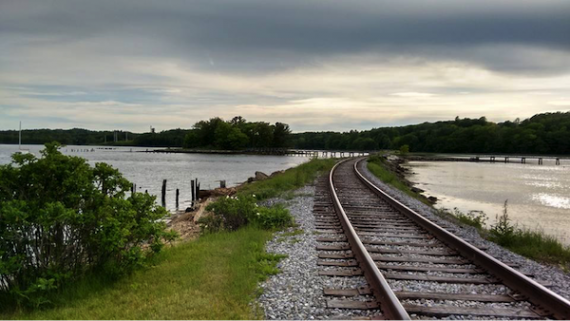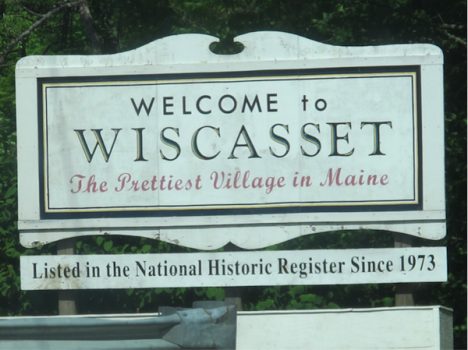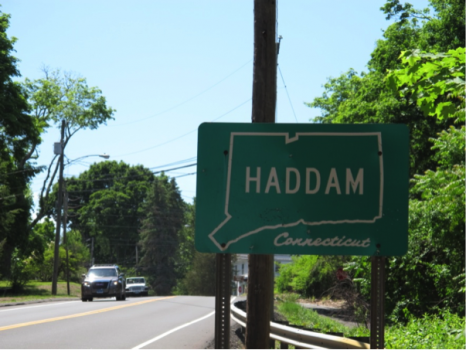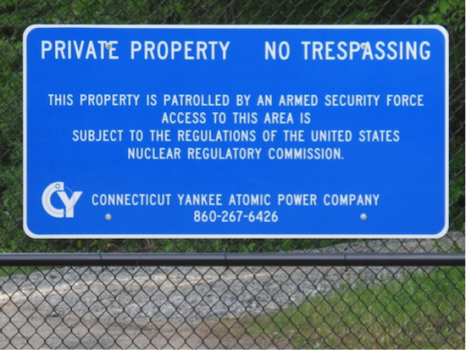The following post was contributed by Alumni Memorial Scholar Kelsey Soderberg ’17, who recently completed an independent research project, using her AMS grant funds, studying population decline in Japan.
As I made my way through Tokyo’s brightly lit streets in the midst of evening rush hour, I second-guessed my previously held ideals of the country’s population decline. Never had I seen such large crowds of people, flocking together like schools of fish to enter the subway; so where was the evidence for Japan’s rapidly shrinking population?
But just like the danger of listening to a single story there lies the danger of viewing a single place to tell the whole story. While Tokyo’s streets are constantly bustling with young professionals, packs of teenagers, businessmen and foreign tourists, many areas throughout Japan are facing severe population decline as the majority of young people leave for the capital in search of a better financial and social life. This migration is accompanied by Japan’s incredibly long life expectancy (>83 years old) and shrinking birth rate (~1.4 births per woman), all contributing to a severe population decline that threatens to ravage the country’s economy and way of life if left unchecked.
With unanswered questions about Japan’s demographic challenges, a curiosity for the unknown, and a nearly overwhelming desire to see the world, I packed up my suitcase over January break and headed to the world’s largest city in the hopes of using my AMS funding to place my knowledge into real world context.
Soon enough, I had exited the plane with no knowledge of the language, simply traveling around Tokyo with a notebook and a backpack on my shoulders. While I was primarily conducting research by fire and observing the cultural and social tendencies of everyday Japanese life, I also met with geography and sociology professors at the University of Tokyo and Sophia University to discuss the impact of Japan’s shrinking population on its economic, political and cultural realms. For me, this project was the culmination of my Colgate liberal arts education: an internationally focused research project primarily fueled by a (relatively random) interest in Japanese sociological problems stemming from Professor Yamamoto’s Core Japan class during my sophomore fall. In the end, my project utilized every skill I’ve learned throughout my four years at Colgate: listening to others to find meaning, asking questions without a clear answer, opening oneself to the unknown, and finding similarities among differences. It also highlighted the interdisciplinary nature of my geography major as I searched for answers to a national problem within each realm of society.

While the rest of the country struggles with a declining population, Tokyo’s skyline goes as far as the eye can see– evidence of the vastness associated with the world’s largest city.
In academic terms, the discourse I held with the professors I met proved my previously held notions of the immediate and long-term effects of such rapid depopulation and furthered my understanding of the issue on a macroscale. But it was the more casual back and forth with each professor accompanied by my quick conversations with Japanese strangers in broken English that proved to be the most valuable parts of my research. While recent statistics clearly demonstrate the dastardly consequences that population decline will have on Japanese economic and cultural life, it was not until I spoke with Japanese people about the concerns they have about their personal finances, their children’s future, and the government’s response that I seemed to gain a more three-dimensional grasp on the interconnectedness of the issues at hand. The economic downturn has sparked a lack of confidence in the future of Japanese jobs, ultimately leading to an uncertainty in the personal decision to have children. The incredibly large number of elderly people has created a population bubble on the brink of bursting, causing many people to question the reality of obtaining their pension after a lifetime of work. Women are working more than in the past, partially out of opportunity and partially out of necessity, and childcare is almost impossible to obtain in Japan’s largest cities, leading to higher median ages of marriage and fewer children. Throughout my trip, the majority of people I spoke with worried about these problems specifically, often blaming the population decline on them and vice versa.
In reality, though, most city folk don’t talk about the country’s demographic issues, as the sheer size of Tokyo and its suburbs makes it easy to forget about them.
It was not until I traveled to the rural, isolated town of Matsukawa in Nagano Prefecture that I realized the tangible effects of the problem lie outside of the capital. Within the Japanese Alps and other more rural areas, life is much slower and the lights less bright. After staying with a wonderful host family and exploring the mountainous region for several days, it was clear that Japan’s famously aging population and low birth rate were much more noticeable in the rural areas than in urban. Small towns like Matsukawa lack young people as many flee to Tokyo or Kyoto for college or to start their professional careers. But for most town residents, depopulation is not thought about—a common theme I found throughout my time there. I was initially struck by this lack of concern about such a pressing issue but soon realized that the Japanese, like any other culture, get caught up in the day to day struggles of life. National issues are often an afterthought, as children, jobs and happiness rank higher on the rung of importance than relatively slow-moving demographic change.
Although my academic standpoint on the critical nature of the issue had initially caused me to look at this type of large-scale apathy with contempt, traveling throughout Japan allowed me to see the humanity in a largely statistical study. Just a five-minute conversation with a Japanese stranger gave me a better grasp on the effects of this population change than many of the books I had belabored over, once again proving the indisputable benefits of the AMS program.

Villages are meticulously placed between farmland and mountains, as the Japanese use every last bit of available land to their advantage. Compared to the ultra-modern lifestyle found in Japan’s cities, rural towns like this are much different.
And in another sense, all hope is not lost. After staying in Kyoto for several days, I drove up to the small city of Ayabe in northern Kyoto Prefecture with a geography professor from Doshisha University in order to see first-hand the effects of depopulation. From the looks of the town’s main street, it was clear that young people had fled for the opportunity-filled cities, leaving behind an agriculturally dominated area struggling to get by in the 21st century. However, the area was also filled with older retirees and young couples with children who had left Tokyo, Kyoto and Osaka to live life at a slower pace. This type of emigration is common in Japan’s more rural areas, as many refuse to adopt the hyper-modern, Westernized world often found in the urban core. While in Ayabe, I visited the local government offices where I learned about yearly welcoming parties held in an attempt to bring city-goers to the area. It was clear that local activism was more robust than many of the attempts to change policy at the federal level– a reflection of the imbalanced narrative and consequences of the demographic change. This will not entirely solve the problem, but it does provide hope in a relatively hopeless situation.
While my on-the-ground research reinforced many of the theories I had previously learned, much of my experience in Japan was welcomingly unexpected and had little to do with my actual research. Here are some of the moments I’ll never forget:
- The way strangers respected each other and welcomed me. After walking into a café in a one-street town, I was given a homemade gift by the owner even though we couldn’t communicate in the same language.
- Making my own traditional Japanese style bed each night on tatami mats.
- Eating dried, roasted, baked, and broiled fish for breakfast, lunch and dinner- and liking them all.
- Waking up to an earthquake in my Tokyo hotel room.
- Experiencing Tokyo rush hour. Though I’ve worked two summers in New York, this was an indescribable experience.
- Feeling completely “at home” with my host family in Matsukawa while playing in the snow with their two young girls and eating homemade udon noodles cross-legged on the floor.
- Skiing the Japanese Alps at Happo-One, the site of the 1998 Winter Olympics.
- Learning about the intricacies of Zen Buddhism, a much needed lesson to prepare for the anxieties that come with senior spring.
- Hand carving a wasabi plant onto my vanilla ice cream. Don’t knock it ‘til you’ve tried it.
- Thanking the geography major in me after conquering each city’s public transportation system by myself.
- Walking through Fushimi-Inari, the land of a Thousand Gates in Kyoto, and feeling completely in awe of human capability.
- Feeding peanuts to dozens of macaque monkeys on a mountain overlooking Kyoto. It sounds as weird and cool as it was.
- Allowing myself to feel vulnerable and uncomfortable in a culture completely different from my own; allowing myself to feel welcomed and comforted by the kindness of strangers and a culture completely different from my own.
Appreciating the freedom to do and see whatever I wanted in a foreign land for two weeks.

The dichotomy of modern Japan lies in the balance between old and new, urban and rural, Japanese and Western. Grappling with these differences were at the heart of most of my cultural observations.
Each place I visited, from Tokyo’s glowing streets to Matsukawa’s mountainous backdrop, provided me with a completely different perspective on Japan from the last. My own identity changed minute to minute as well, giving me distinct vantage points from which to learn and absorb information. One moment I was a well-versed student discussing the implications of a declining population on the macroeconomics of a first-world nation with renowned scholars, and the next moment I was an unaccompanied tourist making my way through foreign alleyways and unknown train stations. These solo moments as a traveler made up the majority of my trip and allowed me the freedom and independence to move from one interest of mine to the next. With few specifics on my itinerary and an impartial unfamiliarity about the realities of Japanese life, I was able to view the culture from an outsider’s perspective with few biased presumptions. Very few times in my life have I felt such autonomy to create an entirely original story while making each and every decision by and for myself. Though I still cannot claim to know what Japan will face in the coming years, the opportunity to learn more was one of the best of my life.







 Juliet is to empty the mailbox and bring the letters to our office. Juliet’s Balcony is a symbol of her love for Romeo, and when standing there, one can imagine the famous balcony scene that takes place in Shakespeare’s play. Being in a place filled with the promise of such love makes us forget rationality and allows us to believe in true love and the ultimate sacrifices that people make to maintain it.
Juliet is to empty the mailbox and bring the letters to our office. Juliet’s Balcony is a symbol of her love for Romeo, and when standing there, one can imagine the famous balcony scene that takes place in Shakespeare’s play. Being in a place filled with the promise of such love makes us forget rationality and allows us to believe in true love and the ultimate sacrifices that people make to maintain it. hundreds of people with problems that many of us had not yet even faced ourselves.
hundreds of people with problems that many of us had not yet even faced ourselves. students showed a genuine curiosity about the story of Romeo and Juliet, and they were faced with the same questions that I had wondered about before leaving for Italy. The exposure to Romeo and Juliet at such a young age, and across many countries, demonstrates how literature plays an important role in spreading the notion of Juliet’s wisdom and ability to help others who are facing difficulties.
students showed a genuine curiosity about the story of Romeo and Juliet, and they were faced with the same questions that I had wondered about before leaving for Italy. The exposure to Romeo and Juliet at such a young age, and across many countries, demonstrates how literature plays an important role in spreading the notion of Juliet’s wisdom and ability to help others who are facing difficulties. different person. These traditions and history succeed in bringing people together and surmounting the vast differences that are seen between cultures and beliefs. I learned that the Juliet Club is a very welcoming and open organization, allowing anyone that walks into the office to ask questions and even offer their own advice by means of answering a letter. We can’t offer each person that writes to us the perfect advice or provide them with all the answers, but we can give them love and hope. The ability of the Secretaries, even though we were all young, to successfully respond to the variety of letters we received was dependent upon our ability to provide a sense of hope. Hope is what has brought millions of people over the years to Verona and to Juliet’s Balcony. The ability of Juliet to find a love that she was willing to die for is inspiring, and although the outcome of her story can be described as nothing short of
different person. These traditions and history succeed in bringing people together and surmounting the vast differences that are seen between cultures and beliefs. I learned that the Juliet Club is a very welcoming and open organization, allowing anyone that walks into the office to ask questions and even offer their own advice by means of answering a letter. We can’t offer each person that writes to us the perfect advice or provide them with all the answers, but we can give them love and hope. The ability of the Secretaries, even though we were all young, to successfully respond to the variety of letters we received was dependent upon our ability to provide a sense of hope. Hope is what has brought millions of people over the years to Verona and to Juliet’s Balcony. The ability of Juliet to find a love that she was willing to die for is inspiring, and although the outcome of her story can be described as nothing short of tragic, she was strong and she was determined and she was hopeful that one day she would be reunited with her Romeo. We all strive to attain the ultimate goal of love and success, and the key to finding these things is finding hope and strength. Juliet’s story embodies such feelings and the ability of the Secretaries to translate these messages into our letters is what makes the Juliet Club successful and encourages the people of the world to continue to put their faith in Juliet.
tragic, she was strong and she was determined and she was hopeful that one day she would be reunited with her Romeo. We all strive to attain the ultimate goal of love and success, and the key to finding these things is finding hope and strength. Juliet’s story embodies such feelings and the ability of the Secretaries to translate these messages into our letters is what makes the Juliet Club successful and encourages the people of the world to continue to put their faith in Juliet.
